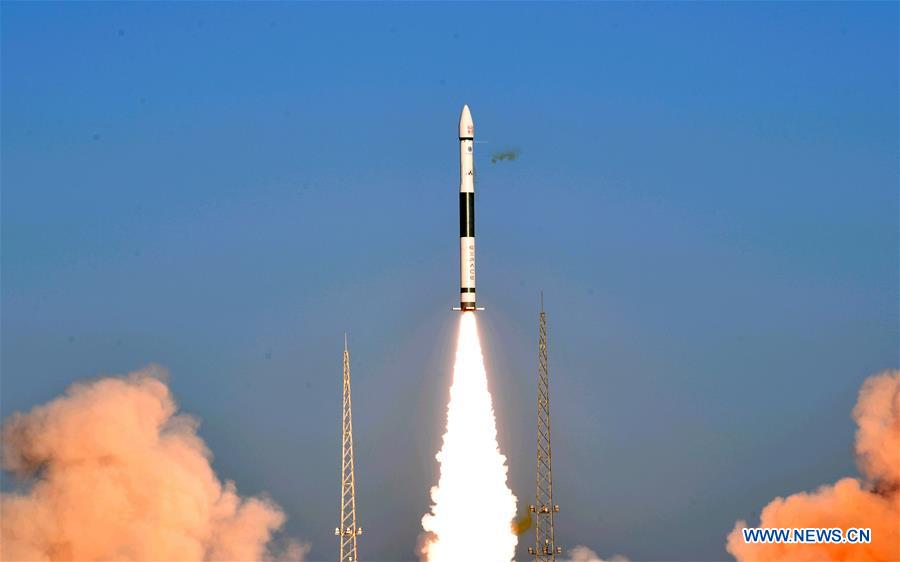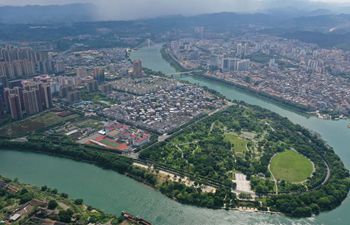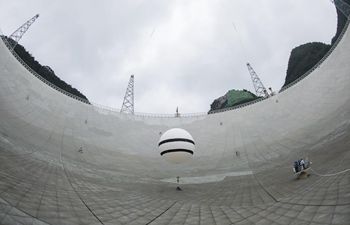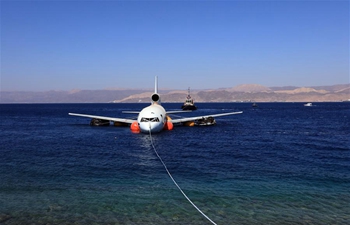
Two satellites for technological experiments are sent into space by a Kuaizhou-1A, or KZ-1A, carrier rocket from Jiuquan Satellite Launch Center in northwest China's Gansu Province, on Aug. 31, 2019. The rocket blasted off at 7:41 a.m. and sent the two satellites into their planned orbit. Kuaizhou-1A, meaning speedy vessel, is a low-cost solid-fuel carrier rocket with high reliability and a short preparation period. The rocket, developed by a company under the China Aerospace Science and Industry Corporation, is mainly used to launch low-orbit microsatellites. Saturday's launch was the third mission of the KZ-1A rocket. (Photo by Wang Jiangbo/Xinhua)
JIUQUAN, Aug. 31 (Xinhua) -- Two satellites for technological experiments were sent into space by a Kuaizhou-1A, or KZ-1A, carrier rocket from the Jiuquan Satellite Launch Center in northwest China on Saturday.
The rocket blasted off at 7:41 a.m. and sent the two satellites into their planned orbit.
Kuaizhou-1A, meaning speedy vessel, is a low-cost solid-fuel carrier rocket with high reliability and a short preparation period. The rocket, developed by a company under the China Aerospace Science and Industry Corporation, is mainly used to launch low-orbit microsatellites.
Saturday's launch was the third mission of the KZ-1A rocket.
One of the newly launched satellites was developed by the Innovation Academy for Microsatellites of the Chinese Academy of Sciences, and will be used for microgravity technology experiments.
The other satellite, developed by Spacety Co., Ltd. (Changsha), a privately owned Chinese commercial space company, will be used to test solar sail technology.















